We sincerely hope that each of you, our readers, will greatly enjoy and appreciate this article we present about these 5 Magical Mammals of Ohio. It was certainly our great pleasure to compile the various information for you. May it provide you with both education and increased awareness.
Obviously, these few species listed herein represent only a small portion of the natural wonders found throughout the region, though. Yet, it’s our belief that they serve as excellent representations of the wonders found here. Check out some of our many other articles for similar marvels.
Eastern Gray Squirrel
Eastern Gray Squirrel Facts
- Leading off this article about these 5 Magical Mammals of Ohio we present the beautiful small creature appropriately named the Eastern Gray Squirrel.
- The clearly informative term easily serves as the most frequently used common name for this beautiful product of evolution. The adorable mammal does have another, very similar title, though. Yet, that’s simply the moderately shorter term of the gray squirrel.
- Among scientific professionals, however, it’s generally referred to by its more formal title. Unfortunately, that technical moniker remains somewhat difficult for the layperson to pronounce. That’s because it bears the official name of the Sciurus carolinensis.
- The rodent received that tongue-twisting appellation due to the efforts of Johann Friedrich Gmelin. The respected German naturalist accomplished the first acknowledgement of the animal as a separate and distinct species. He managed that noteworthy deed in 1788.
- No matter which of these monikers one chooses to use, though, the mammal remains an interesting fauna. Despite its comparatively small stature, it plays a pivotal role in its region. In fact, the creature represents perhaps the most important regenerator of forests in its range.
- It’s therefore fortunate that the Eastern Gray Squirrel seems to be maintaining a population base that’s both stable and sufficient. That pleasant situation also appears to hold true throughout its territory. Accordingly, the IUCN lists it as Least Concern on its Red List.
- The marvel of Nature nevertheless still faces numerous potential threats to its continued existence as a species. Most of those, though, mirror the situation of many species. It faces the possible dangers of habitat degradation and loss, and of course, that of climate change.
Eastern Gray Squirrel Physical Description
The remarkable Eastern Gray Squirrel rarely fails to capture the attention and appreciation of those who encounter it. The delicate animal does so for various reasons, of course. Sheer physical measurements, however, rarely factor into the general degree of respect it’s usually accorded.
In that regard, the creature follows the pattern established by the majority of its kindred around the world. That’s true since it displays no noticeable degree of the phsyiological characteristic of sexual dimorphism. The genders, therefore, can be hard for the layperson to distinguish simply.
Individuals of both sexes of the animal attain a body length that averages somewhere between 9.1 – 11.8 in (23 – 30 cm). The tail, however, grows comparatively lengthy in relation to body size. This versatile appendage typically reaches lengths equaling between 7.5 – 9.8 in (19 – 25 cm).
Weights for this species remain surprisingly light, again among both genders. Mature adults usually reach a mass equaling between 14 – 21 oz (0.4 – 0.6 kg). Exceptional specimens do occur, of course. These, though, rarely exceed either of these categories by more than a very minor amount.
In overall appearance, likewise, both genders of the beautiful Eastern Gray Squirrel present the same overall patterns. Like all known squirrels, it also develops four toes on its front feet, but five on the hind feet. Intriguingly, its small teeth commonly grow throughout the life of the small rodent.
But it’s undeniably the coloring of the gorgeous creature that stands out the most, though. The fur usually presents a predominantly light gray shade. Some, however, present a light brown. Its underside shows an off-white hue. Also gray, the tail typically possesses a dense, fluffy coat.
- Kingdom: Animalia
- Phylum: Chordata
- Class: Mammalia
- Order: Rodentia
- Family: Sciuridae
- Genus: Sciurius
- Species: S. carolenensis
Eastern Gray Squirrel Distribution, Habitat, and Ecology
The distinctive Eastern Gray Squirrel evolved as native to a moderate portion of the earth’s surface. The precise location of that specific zone of habitation likely won’t surprise many people, though. That’s true since it developed as endemic to a section of the continent of North America.
Its very name provides a strong clue into which portion of that greater area it lives in, too. As that indicates, the beautiful mammal mainly lives in the general eastern part. Some do live in the midwest, however. It lives from southeast Canada, to Florida and Texas, in the United States.
Though quite adaptible, the impressive animal does show decidedly clear preferences regarding its choice of habitat. The great majority of observed specimens prefer to make their home in large areas of dense, mature woodland ecosystems. These usually comprise mostly deciduous trees.
Although it does adapt well, the rodent nonetheless shows another strong preference for certain varieties of trees. The forests where it makes its home generally contain a fairly large percentage of hickory and oak trees. These regions, can, though, sometimes include larger parks and yards.
Like its numerous relatives, the Eastern Gray Squirrel evolved as herbivorous in nature. Its diet covers a wide range of local food sources. These include such things as flowers, tree buds and bark, berries, and seeds. It does show a strong preference for various nuts, which it often saves for later.
It also developed as a primarily solitary species. The gentle creature typically builds its nest in the forks of trees. The male and female of the species generally only share a nest during breeding season or exceptionally cold periods. It also makes use of dens in trees vacated by former occupants.
North American Beaver
North American Beaver Facts
- Next up in this compilation of 5 Magical Mammals of Ohio comes the remarkable animal known to man as the North American Beaver.
- This highly distinctive creation of Nature and evolution most often goes by the informative common name that we’ve used herein. Yet, it also has other, equally telling titles that it’s known by. These include American beaver, Canadian beaver, and common beaver.
- Within the scientific community, however, it’s perhaps marginally better known by its technical designation. Thankfully, that’s a relatively simple one for the layperson to pronouce, at least as such tags go. That’s because the marvel holds the formal epithet Castor canadensis.
- The unusual mammal received that particular moniker due to the efforts of Heinrich Kuhl. The highly respected German zoologist accomplished the first official recognition of it as a separate and distinct species. He achieved that scientifically noteworthy feat in the year 1820.
- This marvel represents one of only two extant species of beaver known to exist in the entire world. Confusion sometimes occurs, however, due to the existence of a distantly related rodent. That creature’s often called the “mountain beaver,” thus creating the confusion.
- It also represents the largest rodent on its continent, and competes with its relative in another region of the world for the status of third-largest on earth. That other attains a slightly larger size on average, but individuals of this one have greater known maximum sizes.
- Fortunately, the North American Beaver appears to be maintaining a population base that’s both stable and sufficient. That pleasant state also seems to hold across its entire range. The IUCN therefore presently lists the animal as Least Concern on its published Red List.
- It nevertheless should be considered as facing several potential threats to its continued existence as a species. Like all forms of life on earth today, most of these dangers stem from the actions of man. Chief among these perils stands habitat loss and ongoing climate change.
North American Beaver Physical Description
The captivating North American Beaver typically garners a great deal of attention from those people fortunate enough to encounter one in the wild. The rodent does so for a variety of reasons, though. That’s true since it’s both visually impressive and of a reasonably impressive physical stature.
Regarding its physical characteristics, however, it differs from a pattern common to most mammals. That’s due to the fact that it displays virtually no noticeable degree of the physiological trait known as sexual dimorphism. The two genders thus appear virtually identical to the observer.
Mature adults of both sexes of this intriguing animal attain weights that range from roughly 35 – 60 lb (16 – 27 kg). Exceptional specimens, though, occasionally exceed this mass significantly. These remarkable individuals sometimes actually attain masses totaling an amazing 90 lb (41 kg).
The length of the body itself also accordingly reaches truly eye-catching proportions. Depending on the individual specimen, this usually ranges from between 2.5 – 3 ft (0.75 – 0.9 m). It possesses short front limbs, with clawed hands, as well as longer hind limbs, equipped with webbed feet.
It also evolved relatively small eyes and ears, and remains well adapted for life in and around the water. The eyes have a transparent third eyelid, called a nictitating membrane, that provides protection and allows it to see underwater. The ears and nose also close tightly under the water.
The magnificent North American Beaver further has extremely dense, waterproof fur that’s generally dark brown to reddish-brown in color. That’s composed of both a soft, insulating undercoat and longer, coarse guard hairs. Long, sensitive whiskers also appear on the face of the charming animal.
Yet, it’s likely the aforementioned tail that most people consider to be its defining feature. This unique appendage developed as markedly broad, flat, and scaly. The short tail, though, adds a small amount to this. It usually measures about 10 – 18 in (25 – 45 cm) in length, and 6 in (15 cm) wide.
- Kingdom: Animalia
- Phylum: Chordata
- Class: Mammalia
- Order: Rodentia
- Family: Castoridae
- Genus: Castor
- Species: C. canadensis
North American Beaver Distribution, Habitat, and Ecology
The remarkable North American Beaver evolved as indigenous to a considerably large portion of the earth’s surface. Given its very name, though, the location of that precise zone of habitation isn’t going to surprise anyone. It’s native to many portions of the continent of North America.
Across that greater area, the creature lives within the great majority of the total landmass. To the north, it appears in all provinces and territories of Canada. From there, it lives throughout the contiguous United States, from coast to coast. Its range also extends into northern Mexico.
It displays an impressively high degree of adaptability regarding its choice of habitat. It’s therefore found in a wide range of habitats across its extensive distribution. Its choices show a close link to the availability of water and suitable building materials for both dam and lodge construction.
It typically lives in various freshwater environments, including rivers, streams, ponds, lakes, and wetlands. This amazing animal thrives in areas with slow-moving or still water where it can easily build dams and lodges. Wetlands also form ideal habitats, due to the abundant water and flora.
The rodent also prefers areas situated in close proximity to forests with supplies of trees and woody plants. It favors deciduous trees like willows, poplars, and birches, which it uses for food and building materials. But, it also appears in mixed forests, including deciduous and coniferous trees.
The settings adjacent to rivers and streams, known as riparian zones, naturally remain particularly important for the awesome animal. These areas provide both access to water and a variety of vegetation types, making them prime locations for dam-building and lodge construction.
The beautiful North American Beaver evolved as herbivorous nature. Throughout the warmer months of the year, its diet primarily consists of a wide variety of bark, leaves, and aquatic plants. In winter, however, the fabulous mammal mainly relies on food caches it previously stored underwater.
It ingeniously builds dams using sticks, mud, and rocks to create ponds. These serve to provide deep it with water where it builds its lodges and escapes from predators. It also makes these dome-shaped structures with the same materials, and with underwater entrances for protection.
The breeding season occurs in late winter, from the months of January to March. Mating takes place in the water, and the pair often remains together throughout the year, maintaining their territory and raising the young. A typical litter consists of 1 – 6 kits, with the average being 3 – 4 young.
The intriguing creature takes such intricate precautions for its safety because it faces predation from a wide variety of foes. It commonly faces this threat from such enemies as wolves, coyotes, bears, and large birds of prey. Younger individuals remain especially vulnerable in this specific regard.
Striped Skunk
Striped Skunk Facts
- Our next choice choice for inclusion in this gathering of these 5 Magical Mammals of Ohio bears the descriptive title of Striped Skunk for obvious reasons.
- This beautiful small mammal with the unfortunate reputation most frequently goes by this common name in most regions. It does have a few other generally used monikers, though. Those include the distinctive tags common skunk, northern skunk, and prairie polecat.
- Within the scientific community, however, it’s perhaps more frequently referred to by its technical title. That, thankfully remains a relatively comparatively name for the layperson to pronounce. That’s true since the animal bears the official moniker of the Mephitis mephitis.
- The creature received that distinctive formal title due to the efforts of the German naturalist, Johann Christian Daniel von Schreber. The respected researcher accomplished the first recognition of it as a separate and distinct species. He achieved that noteworthy feat in 1776.
- Regardless of which appellation one chooses to employ, the marvel remains one of the most easily recognizable animals in its native range. It’s even become immersed deep in the local culture, appearing as a character in various cartoons. A total of 13 subspecies also exist.
- Fortunately, the remarkable Striped Skunk seems to be maintaining a sizeable and stable population base. That pleasant trend further appears to hold true throughout the entirety of its habitat zone. The IUCN, therefore, now lists it as Least Concern on its published Red List.
- The intriguing creature nevertheless faces some very real potential threats to its continued existence as a species. In this, it finds itself in the same situation as most species on the earth today. It’s endangered by the dual perils posed by habitat loss and ongoing climate change.
Striped Skunk Physical Description
The remarkable Striped Skunk never fails to present the viewer with a captivating appearance. It fully deserves appreciation for the beauty Nature gifted it with. Yet, it’s not an overly large animal, in terms of pure physical size. Nature, however, blessed the mammal with other attributes.
Like many of earth’s fauna, the beautiful animal usually presents a certain degree of the physiological characteristic of sexual dimorphism. In its case, this trait manifests itself in terms of sheer physical measurements. Due to that tendency, the males attain a larger size than females.
That difference remains relatively minor, though. As a general principle, the males grow to about 10% larger than their female counterparts. This includes both weight and length of body. Exceptional individuals do naturally occur, however, completely regardless of their gender.
Overall, individuals attain an average head-to-tail length measuring somewhere between 20.5 – 30.3 in (52 – 77 cm). Body mass also varies accordingly. Specimens therefore typically display weights ranging from 4 – 9.9 lb (1.8 – 4.5 kg). Some of them do reach as much as 12 lb (5.5 kg), though.
The body of the Striped Skunk is perhaps best described as stout in form. It’s limbs develop as relatively short, while it also evolved a small, conical head. The thickly-furred tail typically accounts for about half the overall length. The front feet have long claws, but the rear one’s are shorter.
Yet its the eye-catching color pattern of the animal that grabs the eye first. The precise nature of this varies widely between individuals, but a basic pattern remains. That generally consists of a deep black background, with the well-known white stripe extending from nose to tail tip.
- Kingdom: Animalia
- Phylum: Chordata
- Class: Mammalia
- Order: Carnivora
- Family: Mephitidae
- Genus: Mephitis
- Species: M. mephitis
Striped Skunk Distribution, Habitat, and Ecology
The beautiful Striped Skunk evolved as endemic to a comparatively wide expanse of the surface of our beautiful world. That precise region of the globe doesn’t surprise many people, however. That’s because it developed as endemic to much of what’s presently known as North America.
The majority of its natural zone of habitation includes the entirety of the continental United States. To the north, though, the mammal appears in the approximate southern half of the country of Canada. Southward, the oft-maligned animal lives in a very small part of northern Mexico.
Nature blessed this natural marvel with an impressive adaptability in terms of its habitat choices. Due to that remarkable degree of flexibility, it appears in a wide range of ecosystems. These include such highly diverse regions as rocky outcrops, wooded ravines, and moderately brushy corners.
It does, however, show a moderate preference for areas of mixed woodlands. Its adaptability never ceases to amaze the viewer, though. As a result of human presence, in some regions, such as the state of Illinois, a few populations actually prefer cultivated areas over uncultivated one’s.
It’s the defensive tactics of the Striped Skunk that undoubtedly gather the most attention, though. Two glands near the base of the tail produce an extraordinarily odorous liquid. The animal has the ability to spray this at will for a respectable distance. Due to the strength of this, it has few predators.
It also evolved as principally carnivorous in terms of diet. The animal mostly feeds on various insects, such as grasshoppers, crickets, beetles, and caterpillars. Yet, it sometimes eats eggs, voles, mice, as well as fish and small reptiles. Various fruit, such as berries, also form an occasional treat.
Gray Fox
Gray Fox Facts
- Now making its appearance in this compendium of 5 Magical Mammals of Ohio we give you the intriguing canine known as the Gray Fox.
- This diminutive but still fascinating creation of Nature most frequently goes by the partially descriptive common name applied to it here. The marvel also has several other alternates, though, These monikers include the maned fox, tree fox, and common gray fox.
- Its formal name, however, remains significantly harder to pronounce, perhaps even for experienced many professionals. That’s because the official term applied to this marvelous mammal in the halls of science lists as the tongue-twisting term Urocyon cinereoargenteus.
- The visually distinctive species further received this hard to utter appellation due to the work of the respected German naturalist, Johann Christian Daniel Schreber. He accomplished the first official recognition of the animal as a separate and distinct species, in the year 1775.
- Intriguingly, at least from a scientific standpoint, the creature represents one of only two members of its genus, Urocyon. Both it and the other representative genetically constitute the closest known surving species, out of all known canids, to a single common ancestor.
- For the moment, the beautiful Gray Fox appears to be maintaining a population base that’s both stable and sufficient. The IUCN, therefore, currently lists the canine as Least Concern on its Red List. That holds true despite a reduced population in certain portions of its range.
- This marvel of Nature and evolution nevertheless faces some potential threats to its continued existence. Habitat loss, predominantly due to human encroachment naturally presents a problem. The greatest threat it faces, though, most likely consists of ongoing climate change.
Gray Fox Physical Description
The magnificent animal most frequently known as the Gray Fox manages to pack all this awesomeness into a relatively small body. This fact merely serves to prove the point that physical size remains wholly irrelevant when considering the impressiveness of any species.
Unlike many of its relatives around the world, however, this creature displays little noticeable degree of the physiological characteristic of sexual dimorphism. This fact further applies to both physical size, and color patterns. The precise reason for this, though, remains unknown.
Due to this, distinguishing the separate genders from a safe distance frequently proves to be difficult, even for trained observors. The average adult, though, reaches a body length of between 19.1 – 26.9 in (48.5 – 78.2 cm). The long tail, though, adds an extra 10.8 – 17.4 in (27.5 – 44.3 cm).
The weight of individual specimens, however, tends to vary quite significantly. This measurement often ranges from as little as 7.9 lb (3.6 kg), to as much as 15.4 lb (7 kg). Exceptional specimens do occur on occasion, though, These sometimes reach a weight of up to 20 lb (9.1 kg)!
The most common color pattern of the Gray Wolf also presents a striking image to the viewer, as well. The upper parts typically display a somewhat grizzled pattern, with a black stripe extending to the end of the tail. It also manifests an off-white on the throat, chest, belly, hind legs, and ears.
- Kingdom: Animalia
- Phylum: Chordata
- Class: Mammalia
- Order: Carnivora
- Family: Canidae
- Genus: Urocyon
- Species: U. cinereoargenteus
Gray Fox Distribution, Habitat, and Ecology
Fortunately for the amazing Gray Fox, as well as those of us who appreciate Nature, the canid evolved as native to a relatively large swathe of the surface of the globe. In fact, it’s the only known wild canid with a natural range that actually includes both North America and South America.
More precisely, however, the wild canine natively inhabits a territorial range that extends as far north as the southern portions of the country of Canada. From there, that area additionally extends through most of the United States, excluding the northwestern mountains of that country.
From there, the wonder’s native territory extends throughout all of Central America, and into the extreme northern portions of Venezuela and Colombia. In all portions of that expanse, though, it displays a decided preference for certain specific types of habitat in which to make its home.
The fascinating animal also displays a decidedly strong preference for areas consisting of mostly wooded, rocky, bushy regions. In some small locations, it manifests a markedly strong fondness for sections of rocky bluffs also possessing a relatively dense covering of brush for its habitat.
Like most of its many known relatives, the Gray Fox evolved as a primarily nocturnal animal. It typically spends most of its days concealed in either burrows, hollow trees, or stumps. It’s also known to be omnivorous, feeding on small prey, insects, and certain local plants, especially fruit.
In one manner, however, this extraordinary animal remains completely unique among its many kindred. That’s due to the fact that it’s the only known canid to routinely climb trees! There, it often sits and makes itself at home as high as 30 ft (9.1 m) up in the branches, and climbs like a cat.
Northern Flying Squirrel
Northern Flying Squirrel Facts
- Closing out this article about these 5 Magical Mammals of Ohio comes the stunning wonder man calls the Northern Flying Squirrel.
- This small mammal most frequently goes by the somewhat informative common name for reasons this image illustrates. It also represents one of only three living members of its genus, Glaucomys, to make its home in what’s now known as the New World.
- The intriguing creature does have another name by which it’s known, though. That’s because, like all species, it also holds a purely technical designation. Fortunately, this one’s relatively simple to pronounce, as such things go. It’s formally named the Glaucomys sabrinus.
- The animal received that unique moniker due to the efforts of the respected English zoologist and botanist, George Kearsley Shaw. He accomplished the first official recognition of it as a separate and distinct species. This scientifically noteworthy action occured in 1801.
- The surprising animal also remains noteworthy for another, astonishing fact. That’s due to the fact that researchers presently recognize a total of 24 subspecies of this small marvel of Nature! This fact alone distinguishes the marvel of Nature from the other members of its Order.
- For the moment, the Northern Flying Squirrel appears to be maintaining a population base that’s both sizable and stable. This fact also seems to hold true throughout the entirety of its known range. The IUCN, therefore, now lists it as Least Concern on its published Red List.
- The remarkable animal nevertheless does face some potential threats to its continued existence as a species. These, however, consist of the same one’s that most species presently face. These include habitat degradation and outright loss, and, of course, climate change.
Northern Flying Squirrel Physical Description
The remarkable Northern Flying Squirrel easily impresses those fortunate to encounter one. It does so, however, for reasons other than sheer size. Although it’s certainly a lovely animal, it’s not just its appearance that distinguishes it. That’s state exists due to other special characteristics.
Unlike many animals around the world, yet in keeping with the pattern established by other squirrels, this creature displays no noticeable degree of sexual dimorphism. Distinguishing the genders of specific individuals encountered therefore remains quite difficult for the casual observer.
In terms of physical size, though, it ranks as somewhat smaller than many of its multiple genetic cousins. Individuals attain an average overall length measuring 9.8 – 14.6 in (25 – 37 cm). That, however, includes the tail as well. This part of the body often comprises roughly half its length.
The body of the appealing rodent develops as quite slim and elongated. The majority of specimens reach an average body weight of only 2.6 – 4.9 oz (75 – 140 gms). Exceptional specimens occur, of course. Even these, though, rarely exceed these measurements by more than a small fraction.
It also displays several very specific adaptations useful for its lifestyle. These include having relatively large, black eyes. It also has the ability to rotate its hind feet, allowing it to climb down trees head first. Its fleshy membrane, however, easily remains its most noticeable physical feature.
In coloring, the fabulous Northern Flying Squirrel presents a pattern of various shades of light brown on the upper body. Yet, it also presents as gray on the flanks of its body. The underside, though, typically manifests a whitish shade. Its tail develops as fluffy, yet somewhat flattened.
- Kingdom: Animalia
- Phylum: Chordata
- Class: Mammalia
- Order: Rodentia
- Family: Sciuridae
- Genus: Glaucomys
- Species: G. sabrinus
Northern Flying Squirrel Distribution, Habitat, and Ecology
The fantastic Northern Flying Squirrel evolved as indigenous to a part of the globe already well known for its abundance of wildlife. That’s due to the fact that the amazing rodent lives on the continent of North America. There, though, its population remains somewhat disjointed in nature.
As its name implies, the great majority of its numbers appear in the northern part of the continent. More specifically, most of its population lives in the nation of Canada. It also appears as far north as the state of Alaska, though. The small wonder of Nature also appears in the United States.
In that country, it’s population’s scattered, though. To the west, it’s seen in California and Colorado. From there, it’s also observed to the northeast in Ohio, Wisconsin, and Michigan. In the east, the animal also lives in regions of Tennessee and North Carolina, in the Appalachian Mountains.
In each of these entirely separate regions, however, it displays identical habitat preferences. Populations most often appear in areas dominated by conifers. Some do, though, make their homes in regions of deciduous or mixed forests. It also prefers dense concentrations of trees, as well.
The wondrous Northern Flying Squirrel evolved as a mainly nocturnal animal. It’s also primarily arboreal in nature. On the ground, it’s relatively clumsy. Among the trees, though, it glides from limb to limb gracefully. Its main predators include hawks, owls, martens, and coyotes, among others.
Its diet remains typical of its kind. As a herbivore, it consumes a wide variety of locally available food. This fare typically includes such staples as various nuts, fungi, acorns, lichens, fruits, buds, and even tree sap. It does, however, occasionally supplement this with insects and even bird eggs.
5 Magical Mammals of Ohio
We legitimately hope that each of you fully enjoyed reading, and hopefully learning something from, this article we’ve written about these 5 Magical Mammals of Ohio. It’s also our fervent hope that doing so has left you with either a new or renewed appreciation for such wonders of Nature.
Unfortunately, however, many of their innumerable kindred around the world now find themselves facing strong threats to their continued existence as a species. Many of those dangers, in fact, stem from the actions of mankind. We must each do all we can to protect and preserve them all.
Check out our other articles on 4 Amazing Australian Spiders, Spectacular Dolphins Throughout Our World, 4 Remarkable Reptiles of Thailand, The Mighty Tornado
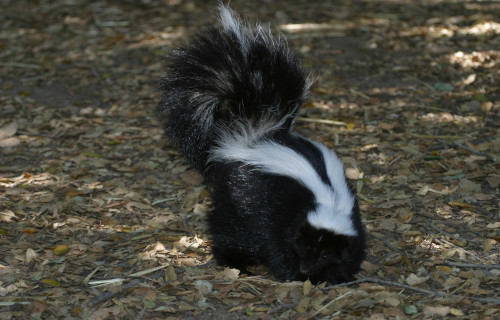
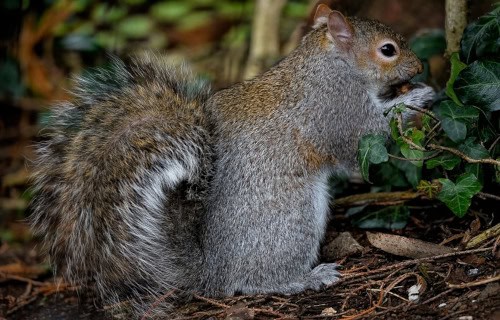
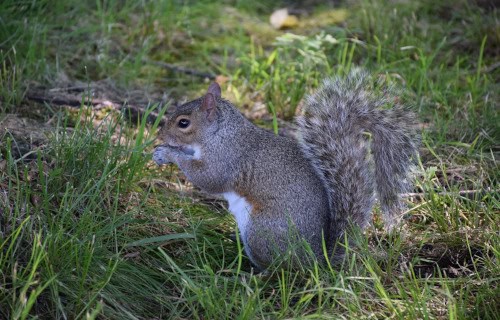
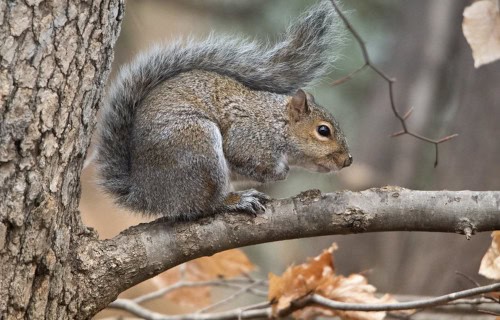
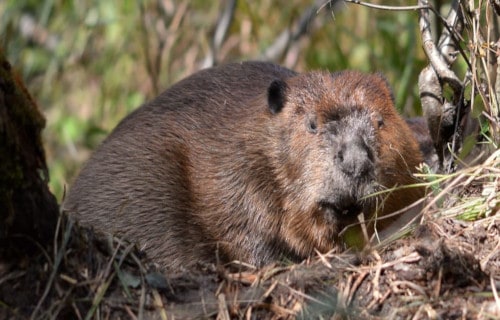
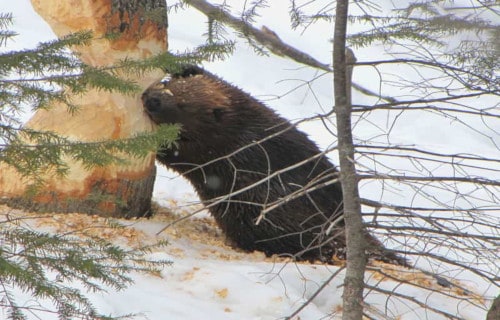
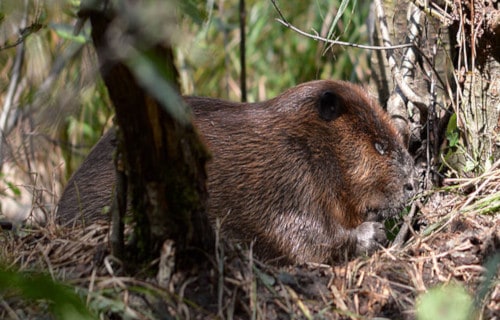
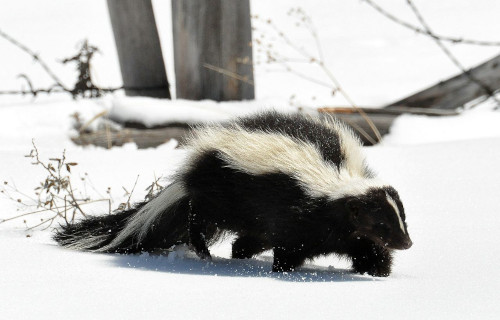
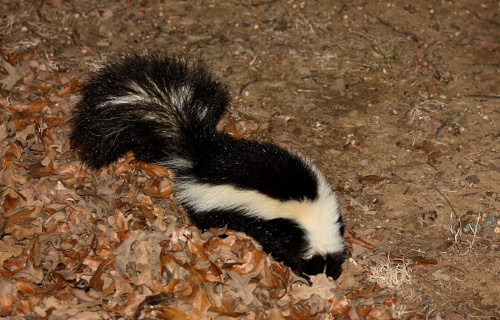
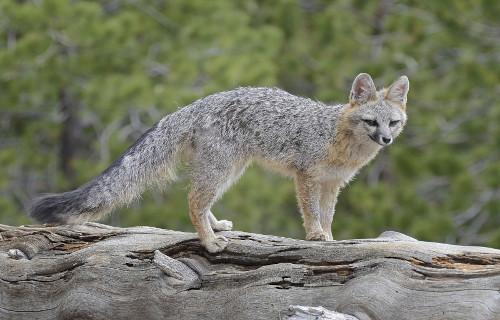

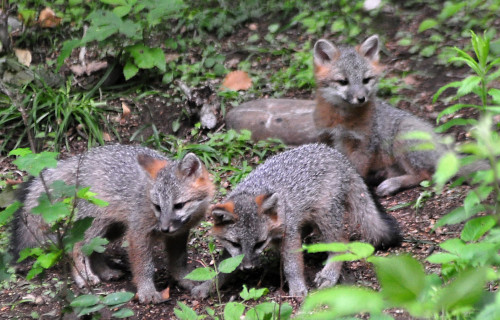
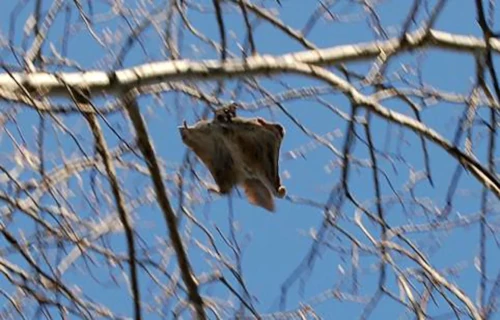
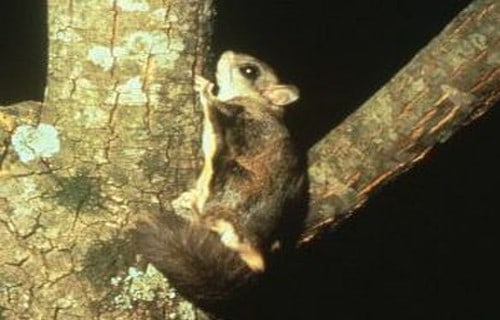
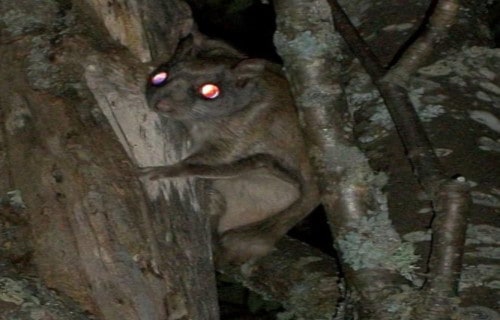









Leave a Reply